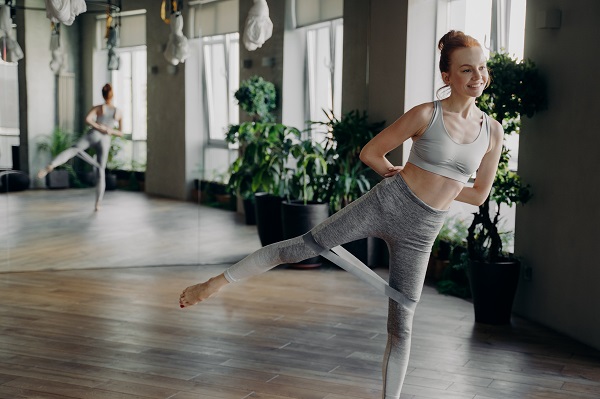Are you interested in starting a cross-training program but don’t know where to start? This article will provide you with all the information you need to know! From the basics of what cross-training is to the different types of exercises and equipment you will need, this guide will walk you through the process of creating a routine that fits your fitness goals. And as a bonus, it will also include tips on making it as effective and enjoyable as possible. Read on and get ready to start!
Contents
- 1 Guide To Cross-Training Basics
- 2 Equipment You Need For Cross-Training
- 3 Tips For Creating A Cross-Training Routine
- 4 Start With What You Know
- 5 Have A Plan For Each Day
- 6 Mix Up Intensity Levels
- 7 Listen To Your Body
- 8 Simple Tips For Effective Cross-Training
- 9 Ways To Make Your Cross-Training Fun!
- 10 Follow This Beginner’s Guide To Cross Training!
Guide To Cross-Training Basics
Cross-training is a key part of a well-rounded fitness program. By incorporating different types of exercise into your routine, you can target muscles that otherwise remain unexercised while also improving flexibility and coordination. Cross-training typically includes cardio training, strength training, core work, and stretching or yoga. Cardio exercises are beneficial for increasing the heart rate and burn fat over an extended period, while strength-based exercises help build muscle.
Not only will performance suffer without diversity in your workout regimen, but you may be missing out on additional health benefits. Core work activates the abdominal muscles and strengthens overall stability, and flexibility is improved by using various stretches or yoga poses. With cross-training, you can do something new daily while achieving your desired results over long periods.
Equipment You Need For Cross-Training
Cross-training is a great way to add variety to your workout routine and help you push yourself further in achieving your fitness goals. However, if you are keen on exploring this form of exercise, it is essential to ensure that you have the right equipment to benefit from it.
Essential items to consider when cross-training include light hand weights for strength training exercises, resistance bands for improving mobility, and a good pair of shoes with proper cushioning and arch support for any higher-impact moves.
Additionally, to measure your progress and find applicable motivation points – especially during a home workout – an activity tracker or pedometer can take up an average sweat session by tracking stats like distance traveled and calorie burn. Ultimately, having the right tools at your disposal makes all the difference when maximizing any type of physical activity.
Tips For Creating A Cross-Training Routine
After you spend a little bit of time with the basics, it’s time to create your personalized routine. Here are some tips that will help you get the most out of your cross-training experience:
Start With What You Know
Creating an effective cross-training routine can seem daunting, yet by starting off with what you know and leveraging that knowledge to build on other aspects of exercise, you will have a comprehensive program in no time. When beginning to design your routine, start with the given. What activities do you enjoy? Are there certain movements or muscles you want to focus on?
Once you have a good idea of what kind of workout feels good for your body, it will be easier to integrate different activities into your regular regimen. With careful consideration and experimentation, you can build your custom cross-training routine – one that is tailored specifically to your individual needs and goals.
Have A Plan For Each Day
Creating a daily plan for your cross-training routine is key to seeing the best results imaginable. By planning out what exercises you’ll do each day ahead of time, you ensure that all the necessary muscle groups get worked over the course of the week and prevent overexertion in any one area. Additionally, having a plan helps to ensure an effective workout as it keeps your mind focused on what you intend to accomplish when you start your routine.
One great way to do this is to use a calendar and write out the exercises you’ll do each day. This makes it easier to stay motivated and track your weekly progress. Just be sure to write in a day to rest!
Mix Up Intensity Levels
One of the benefits of cross-training is the ability to mix up intensity levels while still providing a quality workout. Rather than sticking to the same speed and duration for each activity, you can incorporate high-intensity intervals in some sessions and low-intensity stretches in others.
This helps create an effective routine that keeps your body challenged and engaged in different ways, ultimately improving your fitness performance and endurance.
When changing the intensity of exercises in your routine, it’s essential to balance out intense periods with relaxing activities like stretching or light jogging. The combination of varying intensities can help optimize recovery time and the results you see from your workout.
Listen To Your Body
A balanced cross-training routine can be the key to achieving your fitness goals. But it is equally important to ensure you listen to your body as much as possible when putting together a training schedule. Having an ideal exercise plan is one thing, but if it does not fit into a realistic timeline or feel comfortable for your body, it won’t bring about the desired results.
Pay attention to any aches, pains, and general fatigue levels that you may experience when exercising, and don’t overexert yourself to avoid potential injury or burnout. Remember – finding a sensible equilibrium between challenging yourself and honoring your own body’s needs can go a long way toward creating an effective workout program!
Simple Tips For Effective Cross-Training
Once you have your routine in place, you can add in some advanced features to further improve the effectiveness of your program. For example, one great way to ensure maximum results is to incorporate regular active recovery days into your regimen, which helps promote muscle growth and prevent injury by allowing time for tissue repair, mobilization, and flexibility.
Additionally, pay attention to nutrition. Eating a healthier diet aligned with your fitness goals can help provide the energy and nutrients needed to get the most out of a cross-training routine. Eating enough protein, healthy fats, carbs, and other essential micronutrients help to repair muscles post-exercise and ensures that your body is properly fueled for each workout session.
Ways To Make Your Cross-Training Fun!
Finally, staying motivated and on track with any new exercise routine can be difficult. The best way to ensure that your cross-training program is successful is to find ways to make it enjoyable, which can be as simple as adding a few silly exercises or training with a friend.
There are also plenty of great online resources available that can help you find interesting and unique cross-training activities to add to your routine. By coming up with new and exciting ways to stay active, you’ll likely stick with your program and reap the benefits of cross-training!
Follow This Beginner’s Guide To Cross Training!
This guide to cross-training should give you a good overview of how to create an effective cross-training program that works for your body and fitness goals. From choosing the right exercises to knowing how to make them effective and enjoyable, you are ready to create a tailored program that is both safe and sustainable. Consistency and listening to your body are key to getting the most out of your cross-training routine! Good luck, and have fun!










